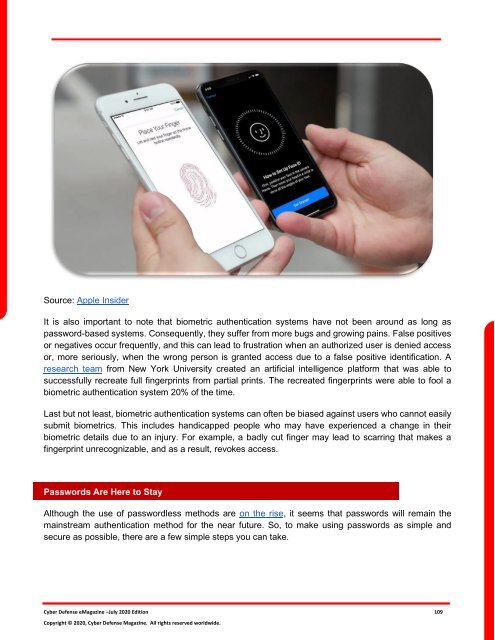Cyber Defense eMagazine July 2020 Edition
Cyber Defense eMagazine July Edition for 2020 #CDM #CYBERDEFENSEMAG @CyberDefenseMag by @Miliefsky a world-renowned cyber security expert and the Publisher of Cyber Defense Magazine as part of the Cyber Defense Media Group as well as Yan Ross, US Editor-in-Chief, Pieruligi Paganini, Co-founder & International Editor-in-Chief, Stevin Miliefsky, President and many more writers, partners and supporters who make this an awesome publication! Thank you all and to our readers! OSINT ROCKS! #CDM #CDMG #OSINT #CYBERSECURITY #INFOSEC #BEST #PRACTICES #TIPS #TECHNIQUES
Cyber Defense eMagazine July Edition for 2020 #CDM #CYBERDEFENSEMAG @CyberDefenseMag by @Miliefsky a world-renowned cyber security expert and the Publisher of Cyber Defense Magazine as part of the Cyber Defense Media Group as well as Yan Ross, US Editor-in-Chief, Pieruligi Paganini, Co-founder & International Editor-in-Chief, Stevin Miliefsky, President and many more writers, partners and supporters who make this an awesome publication! Thank you all and to our readers! OSINT ROCKS! #CDM #CDMG #OSINT #CYBERSECURITY #INFOSEC #BEST #PRACTICES #TIPS #TECHNIQUES
You also want an ePaper? Increase the reach of your titles
YUMPU automatically turns print PDFs into web optimized ePapers that Google loves.
Source: Apple Insider<br />
It is also important to note that biometric authentication systems have not been around as long as<br />
password-based systems. Consequently, they suffer from more bugs and growing pains. False positives<br />
or negatives occur frequently, and this can lead to frustration when an authorized user is denied access<br />
or, more seriously, when the wrong person is granted access due to a false positive identification. A<br />
research team from New York University created an artificial intelligence platform that was able to<br />
successfully recreate full fingerprints from partial prints. The recreated fingerprints were able to fool a<br />
biometric authentication system 20% of the time.<br />
Last but not least, biometric authentication systems can often be biased against users who cannot easily<br />
submit biometrics. This includes handicapped people who may have experienced a change in their<br />
biometric details due to an injury. For example, a badly cut finger may lead to scarring that makes a<br />
fingerprint unrecognizable, and as a result, revokes access.<br />
Passwords Are Here to Stay<br />
Although the use of passwordless methods are on the rise, it seems that passwords will remain the<br />
mainstream authentication method for the near future. So, to make using passwords as simple and<br />
secure as possible, there are a few simple steps you can take.<br />
<strong>Cyber</strong> <strong>Defense</strong> <strong>eMagazine</strong> –<strong>July</strong> <strong>2020</strong> <strong>Edition</strong> 109<br />
Copyright © <strong>2020</strong>, <strong>Cyber</strong> <strong>Defense</strong> Magazine. All rights reserved worldwide.


















